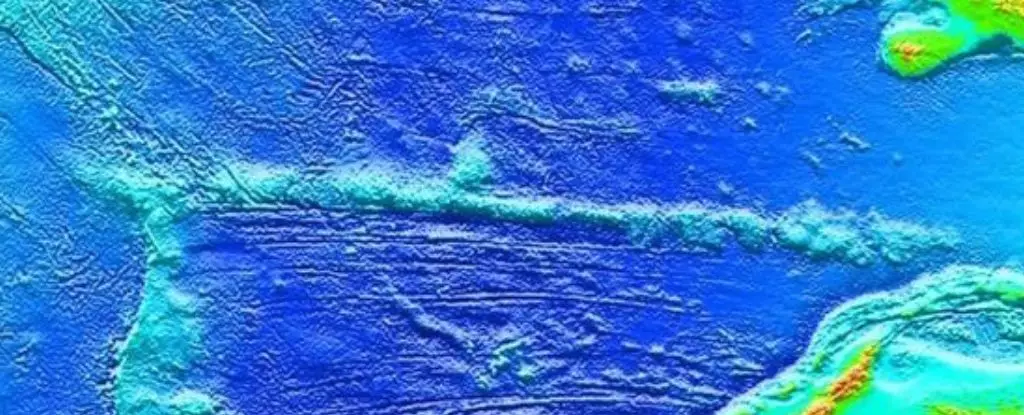The Indian Ocean is a vast and largely unexplored marine expanse, yet it conceals within its depths one of the world’s most extensive mountain ranges, the Ninetyeast Ridge. Stretching an astounding 5,000 kilometers (3,107 miles) beneath the ocean’s surface, this submerged geological feature has been a subject of intrigue and speculation among scientists. Recent research has shed light on its formation, revealing a dynamic and unexpected history that challenges long-held beliefs about volcanic activity beneath the sea.
At the core of the discussion about the Ninetyeast Ridge are seamounts—underwater volcanoes that dot the ocean floor. Traditionally, it was believed that these formations arose from stationary hotspots where molten material from beneath the Earth’s mantle rose through tectonic plates. Scientists likened this activity to an upside-down sewing machine, where the movement of a fabric (the tectonic plate) over a still needle (the hotspot) created a pattern of volcanic islands and ridges. However, this analogy has evolved. Discoveries indicate that the formation of the Ninetyeast Ridge diverges from this traditional model, suggesting that the hotspot itself has traveled considerable distances over geological time.
The Ninetyeast Ridge’s primary volcanic influence is attributed to the Kerguelen hotspot. This research indicates that rather than remaining stationary, the hotspot has migrated significantly within the mantle over millions of years. According to geoscientist Hugo Olierook from Curtin University, the implications of this findings are profound; the shift of the hotspot, rather than the movement of tectonic plates alone, has accounted for the ridge’s unique structure. This revelation demonstrates a new understanding of geological processes in oceanic environments, reinforcing that such hotspot movement may be prevalent but previously overlooked.
Researchers assert that the Kerguelen hotspot’s activity correlates with the historical movement of the Indian Plate. Between 83 and 66 million years ago, data indicates that the mountain range was rising at only half the rate of the surrounding seafloor spreading. This discrepancy suggests that as the Indian Plate migrated northward, the mantle plume associated with the Kerguelen hotspot was not stationary, which challenges existing models regarding the fixed positions of geological features below tectonic plates.
The team, led by Qiang Jiang from the China University of Petroleum, posits that interactions between the mantle plume and the northward-drifting Indian-Antarctic spreading ridge facilitated this movement. As the plume was first captured and later severed from the ridge’s influence, the landscape of the Indian Ocean was profoundly shaped, creating a demarcation that distinctly separates its eastern and western sections.
The research findings on the Ninetyeast Ridge are not merely academic; they have significant implications for our understanding of Earth’s geological history. By highlighting the active nature of mantle plumes, these studies enable scientists to refine existing models of tectonic movement and volcanic activity, bridging gaps between the surface geological features and the deep Earth processes at play. The recognition that hotspots can relocate opens a myriad of questions for future investigations and engenders a deeper understanding of the relationship between mantle dynamics and plate tectonics.
The revelation of the Ninetyeast Ridge’s surprising origins enhances not only our understanding of the Indian Ocean but also enriches the broader narrative of our planet’s geological history. For years, simplistic models have dominated interpretations of seafloor topography. The acknowledgment of the complex interactions between moving hot spots and tectonic plates clashes with past assumptions and invites a reevaluation of established geological norms. As researchers continue to explore these underwater landscapes, the mysteries of our planet continue to unfold, revealing the ongoing story of Earth’s dynamic and interconnected systems.


Leave a Reply